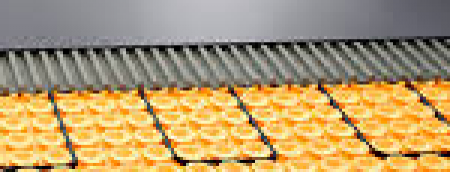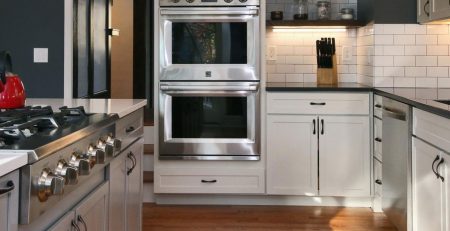Keep Your Feet Warm with Heated Floors
Have you ever walked across a cold tile floor on a chilly morning, wishing to end your discomfort? Heated floors, also known as radiant heating, might be the solution. They provide an energy-efficient way to keep your home and your toes warm. This heating system provides warmth from the ground up, creating a comfortable and even temperature throughout your space.
Hydronic vs Electric Heated Floors
There are two types of radiant flooring: hydronic and electric. Both can be retrofitted to your home. Hydronic systems use tubing that allows hot water to flow and heat a house efficiently.
Hydronic systems cost more to install but cost less to run long term. Electric systems are supplemental and do not heat an entire room. They use cables pre-attached to mats installed on the subfloor. This type of floor usually goes under stone or tile. Hybrid systems use both water and electricity and are increasingly popular with homeowners.
Benefits of Choosing Radiant Flooring
When you choose radiant heating, you will have a more efficient system than air. It is also more comfortable, customizable, and quiet. With its proven reduction in allergens, no ducts or grills, and terrific resale value, radiant flooring is a win for your home. Radiant heat is better for people with dust allergies or sensitivities because less dust floats around the air. These systems should last about 40-50 years, almost triple the time a boiler lasts! That’s because radiant systems don’t require high water temperatures like boilers.
Radiant heat is more efficient than other heating systems because it heats surfaces directly, leading to lower energy bills and a smaller carbon footprint. Radiant heat may feel more comfortable as it doesn’t dry out the air like forced air systems. It doesn’t circulate dust or allergens; it gives a warm and gentle heat. These systems tend to be quiet so that you won’t hear the clunks of a boiler heating up. You can comfortably walk barefoot even in the cold temps.
Warm your home or garage with radiant flooring, and you will be thanking yourself all winter!
Drawbacks to Radiant Flooring
While there are many benefits, there are some drawbacks to be aware of. Radiant heating costs more to install than other heating systems, especially if it has to be retrofitted. You might need to replace the existing flooring because the contractor will install the new floor underneath. Floor coverings must be thin so as not to insulate the heating system. Tile or stone is the best flooring for this type of heat, but you can choose from laminate, hardwood, or vinyl. Another thing to be aware of is the radiant heat will slightly raise the floor. Radiant flooring is installed above a subfloor, elevating your floor about an inch.
Homeowners who like to turn their heat up and down or on and off throughout the day would benefit from something other than radiant heat.
Initially, radiant flooring costs more to install than other heating systems, but it is more energy efficient, so over time, you will save money.
To get a quote on how much radiant heat will cost you on your next remodel, call Hudson Home Improvement – Home Renovation Contractors Jersey City at your earliest convenience. We will be happy to answer all your questions.









